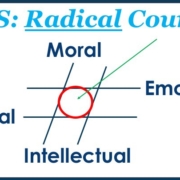How Veteran-Led Organizations can Compete and Win

GUTS: How Veteran-led Organizations can Compete and Win
GUTS, perseverance, bouncing back, enduring hardship – these are concepts familiar to veterans. They are useful in combat. How about in the business and nonprofit worlds?
Veteran-led businesses and nonprofits can face an uphill battle.
Veteran-led businesses and nonprofits can face an uphill battle. Digital technology has expanded the scale and scope of competitive interaction in the marketplace. A single Google search reveals ratings and reviews that can make or break small organizations. Digital technology has enabled giants such as Amazon, Wal-Mart, and others to compete in places where small companies used to dominate. After so many recent nonprofit scandals, donors are likewise favoring big nonprofits with long track records. This intense competition is placing enormous pressure on small business and nonprofit leaders.
Many post-9/11 veterans start a new business or nonprofit because they want to make a difference. Business entrepreneurs imagine products or services that will improve the lives of others. Social and political entrepreneurs rally others to a cause or mission they believe will make America and the world a better place.
Once you have a product or service
Once you have a product or service that others want to buy or a cause that others want to support, you have made a critical first step. That’s not enough to grow sustainably. Roughly half of small companies are out of business within the first five years. Only 28 percent of nonprofits created in 2005 still report financial activity 10 years later. At the heart of these problems tend to be failures in Leadership, Culture, and Strategy.
Nearly half the leaders in America are considered to be incompetent. Nearly 70% of Americans, according to a Gallup, report being unengaged at work. One slacker or jerk reportedly can reduce performance in a group by 30 percent. McKinsey, a consulting firm, says that most business executives are not satisfied with their strategic planning processes. Of those organizations with a strategy, an estimated 90 percent fail to execute them successfully.
Look at Jawbone. They were once the leaders in Bluetooth-enabled music devices. Then they shifted emphasis to personal fitness devices. This strategic decision brought about the failure of the company. Toys-R-Us, the world’s largest seller of toys, likewise succumbed to poor strategy. Uber, once the highest valued start-up in history, went to the brink of collapse due to poor leadership and a toxic culture. Oxfam International’s recent problems stem from bad leadership and culture problems, too. All of these organizations have or had great products and causes. Their failures resulted from issues in Leadership, Culture, and/or Strategy.
How to achieve lasting success?
How to achieve lasting success? Decades of personal experience and over 20,000 hours of research and writing suggest that organizations grow sustainably when they get right with 3 BIG things: Leadership, Culture, and Strategy. Organizations that are failing have major problems in one or more of these three areas. In a dynamic marketplace, it is not good enough to get these elements right once – organizations must keep them on track.
Lead with GUTS
To make all this simple, memorable, and meaningful for small business and nonprofit leaders, we use the term GUTS to describe what organizations need to succeed.
GUTS has a three-fold meaning:
• A synonym for Radical Courage – practicing the four main types of courage leaders need: physical, moral, emotional, and intellectual.
• A metaphor for your Core — management, values, and systems – i.e., the guts of your organization.
• A memory aid: Greatness (your goal) = U (you as a leader) x T (teams in the thriving culture) x S (strategy to compete and win).
Small businesses and nonprofits that get the 3 BIG things right have a decided advantage in a competitive marketplace. Solid leadership keeps the company agile and creates believers among employees and customers. A healthy organizational culture improves employee engagement and reduces turnover. A winning strategy enables organizations to determine how to best focus their efforts and succeed. Together, they create an organization that is able to fend off serious threats, seize fleeting opportunities, and grow sustainably.







